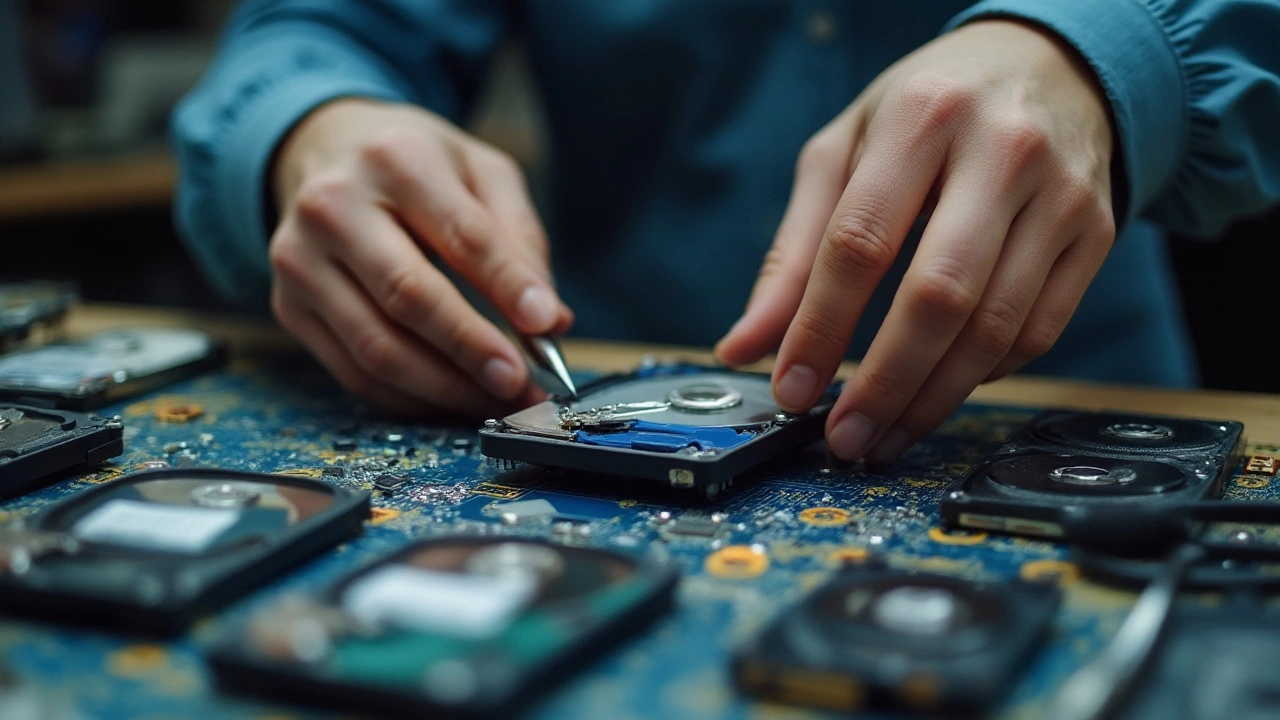Hard Drives: Fast Speed, Types, and Buying Guide
If you’re buying a new PC or upgrading an old one, the hard drive is the first thing you should think about. A fast drive means programs load quicker, games run smoother, and big files copy in minutes instead of hours. Below you’ll find the basics of what makes a hard drive fast and how to pick the right one for your needs.
Speed Factors You Should Know
All hard drives store data on magnetic plates (HDD) or flash chips (SSD). The way they move data is the biggest speed difference. HDDs spin at 5400 or 7200 revolutions per minute (RPM). Higher RPM means the read/write head finds data faster, but you still get some drag from the moving parts.
SSDs have no moving parts. They use NAND flash memory, so data can be accessed almost instantly. That’s why an SSD can boot Windows in under a minute while an HDD can take three or more. The other speed metric is the data transfer rate. HDDs are usually rated at 100‑150 MB/s, while modern SSDs easily hit 500‑3500 MB/s depending on whether they use SATA or NVMe.
Cache size also matters. Both HDDs and SSDs have a small amount of fast memory built in. A larger cache can smooth out short bursts of activity, making the drive feel snappier. For most home users, a 256‑512 MB cache on an HDD or a 1‑2 GB cache on an SSD is more than enough.
Choosing the Best Hard Drive for Your Needs
First, decide what you’ll store. If you mainly use Office apps, browse the web, and watch videos, a 500 GB‑1 TB SATA SSD gives you speed without breaking the bank. If you need tons of space for movies, photos, or backup files, a 2‑4 TB HDD is a cheaper way to get capacity.
Second, think about your computer’s ports. Older laptops may only have a 2.5‑inch SATA bay, while recent models often support M.2 NVMe slots. NVMe drives are the fastest, but they’re also pricier. If your machine only has a SATA port, a SATA SSD still offers a huge boost over an HDD.Third, consider reliability. SSDs are more resistant to drops because they have no moving parts. For a desktop that stays on a desk, an HDD works fine, but if you travel a lot, an SSD is safer.
Finally, balance price and performance. A good rule of thumb is to spend about 20‑30% of your total build budget on storage. You can get a 1 TB NVMe SSD for around $80‑$100, which is a solid middle ground. If you need more space, pair a smaller SSD for the OS and apps with a larger HDD for files.
In short, the fastest drive is an SSD, especially an NVMe model. But the right drive for you depends on how much you store, what ports you have, and how much you want to spend. Pick a mix that fits your workflow, and you’ll notice the difference the moment you turn on your PC.
- January 16 2025
- 0 Comments
- Rowan Cavendish
Understanding the Main Types of Hard Drives and Their Uses
This article explores the four primary types of hard drives that are commonly used in computers and other electronic devices. It provides insights into each type's unique characteristics, including storage capacity, speed, and durability. Readers will also discover how to choose the right hard drive based on their needs, whether for personal use or intensive computing tasks. By understanding these options, you'll be better equipped to enhance your device's performance.
- Driving Lessons (41)
- HGV Training (31)
- Driving Test Tips (31)
- Driving Test Booking (26)
- Driving Licence Renewal (23)
- Driving Theory Test (21)
- Pass Plus Course (15)
- Driving Tips (15)
- Intensive Driving Course (15)
- Driver Licensing (14)
Categories
- December 2025 (12)
- November 2025 (13)
- October 2025 (21)
- September 2025 (5)
- August 2025 (8)
- July 2025 (30)
- June 2025 (30)
- May 2025 (30)
- April 2025 (31)
- March 2025 (30)
- February 2025 (28)
- January 2025 (34)
Archives
- driving lessons
- driving test
- driving tips
- intensive driving course
- driving test tips
- HGV training
- learn to drive
- driving theory test
- driver training
- driving test booking
- pass driving test
- HGV driving
- road safety
- driving license renewal
- Virginia driving test
- learner drivers
- safe driving
- Virginia driver's license
- driving license
- learning to drive

